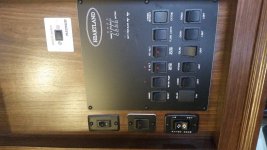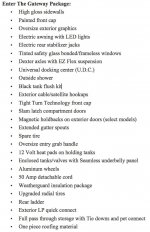GoatsRock
Member
Hello All,
This is our first winter with a fifth wheel (or any camper for that matter) and we have a trip planned in December. We have an appointment to have our fifth wheel winterized in mid-November, but it may dip below freezing before then. If so, my thought is that we can just turn on the heat to keep things from freezing. Is that an accurate assumption?
Also, when we did our walk-through, our rep told us that one of the unmarked buttons on the panel was for the underbelly heater. From what I've read on the forums, it seems like the underbelly heater is just hot air from the furnace directed at the water tank... is that so, or is it something completely separate that needs it's own on/off switch? Any info on how to operate/when to use the underbelly heater is greatly appreciated.
Thank you in advance!
This is our first winter with a fifth wheel (or any camper for that matter) and we have a trip planned in December. We have an appointment to have our fifth wheel winterized in mid-November, but it may dip below freezing before then. If so, my thought is that we can just turn on the heat to keep things from freezing. Is that an accurate assumption?
Also, when we did our walk-through, our rep told us that one of the unmarked buttons on the panel was for the underbelly heater. From what I've read on the forums, it seems like the underbelly heater is just hot air from the furnace directed at the water tank... is that so, or is it something completely separate that needs it's own on/off switch? Any info on how to operate/when to use the underbelly heater is greatly appreciated.
Thank you in advance!



